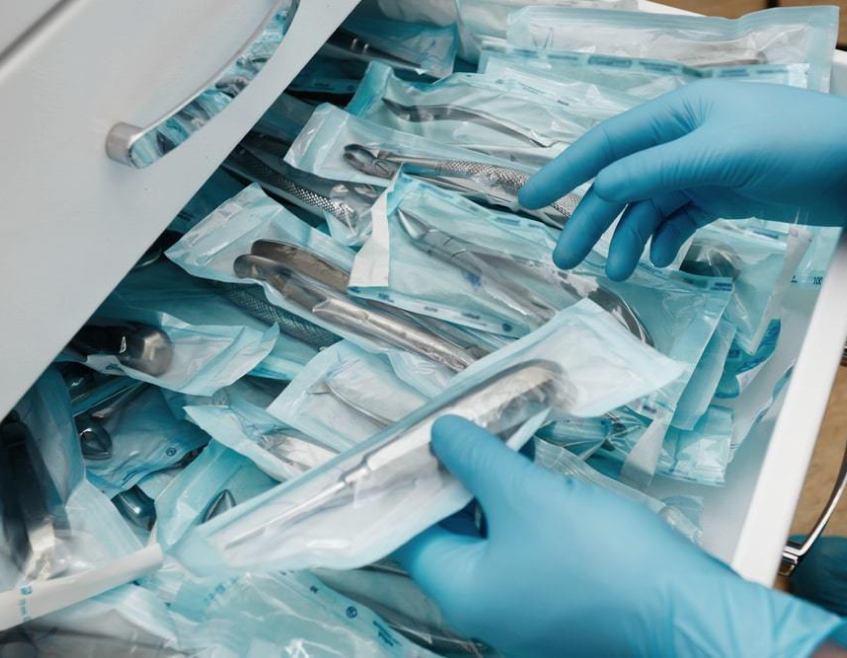Frequently Asked Questions
1What should I do if a heat-seal pouch does not seal properly?
Check the sealing temperature of the heat sealer. Typical sealing temperatures are between 165-180 degrees C (329-356 degrees F). If the heat-sealer cannot be adjusted to provide a proper seal, then use indicator tape until the heat-sealer can be repaired or replaced.
2What should I do if a self-seal pouch does not seal properly?
If there is a perforation, check to make sure it is manufactured correctly to allow for a proper fold. Ideally the adhesive tape should make contact with 50% paper and 50% film. Perforations that are improperly located are a challenge to seal properly as are perforations that are not scored well. Consider switching to a pre-folded pouch to provide a more accurate seal and not compromise its’ ability to maintain sterility until point of use.
3What should be done if the chemical indicator on a processed pouch doesn’t change colour?
The pouch should not be used and the item inside should be reprocessed. Chemical indicators printed directly on pouches assist users to visually see processed versus unprocessed items. No colour change on a processed pouch can be caused by overloading, improper cycle selection or running the sterilizer from a cold start. Be sure to review proper sterilizer parameters and loading procedures before processing. It should be noted that chemical indicators do not reproduce the exact same change every time. A discernible change from the starting colour indicates that the sterilization process has been completed.
In order to avoid a “false positive” indicator colour change i.e. a change when the sterilization process has not been completed, occasionally run a cycle shorter than the ISO 11140-1 recommended guideline for Class 1 process indicators.
4What causes a pouch to burst open during sterilization?
Pouches are designed for packaging single instruments or light weight items. Overloading pouches with too many items or a heavy item can cause them to burst during sterilization. A good rule of thumb is to not place items inside a pouch beyond ¾ of the usable space.
5Why do some pouches tear or fracture when opening?
Peel pouches, regardless of the brand or supplier, can tear or fracture if opened in the wrong direction or in haste. To avoid paper tears or film fracturing, be sure to open in the direction they are sealed and use a knuckle roll technique. Pouches that tear or fracture during opening, can compromise sterility.
6Is it O.K. to double pouch items and if so, how should this be done?
Double pouching is an accepted practice based on user preference and institutional policy. When choosing to double pouch, the inner pouch should be located in the same direction as the outer pouch (paper to paper, film to film). Selecting the correct size inner pouch is important to avoid having to fold the inner pouch, which can compromise sterility.
7Are GS Medical packaging products 100% latex-free?
Yes, all GS Medical rolls and pouches are 100% latex-free and eco-friendly.
8What is the shelf-life of a GS Medical Sterilization Pouches?
Traditionally, hospitals have used “expiration dating” as the standard sterility maintenance policy for in-hospital sterilized supplies. However, organizations such as AORN, JCAHO and others now recognize that sterility is “event-related”, not time-related. In other words, sterile supplies are not contaminated by time, but by events, such as exposure to moisture, dropping, excessive handling.
As a result, many hospitals are moving from an expiration dating system to an “event-related” sterility maintenance policy for in-hospital sterilized supplies. With this system, expiration dates are not required; packages are considered sterile unless damaged or opened.
GS Medical’s pouches, and rolls have been tested to determine their ability to provide protection from contamination. Shelf-life studies confirm that our pouches and rolls provide effective protection for at least twelve months with 100% maintenance of sterility.

